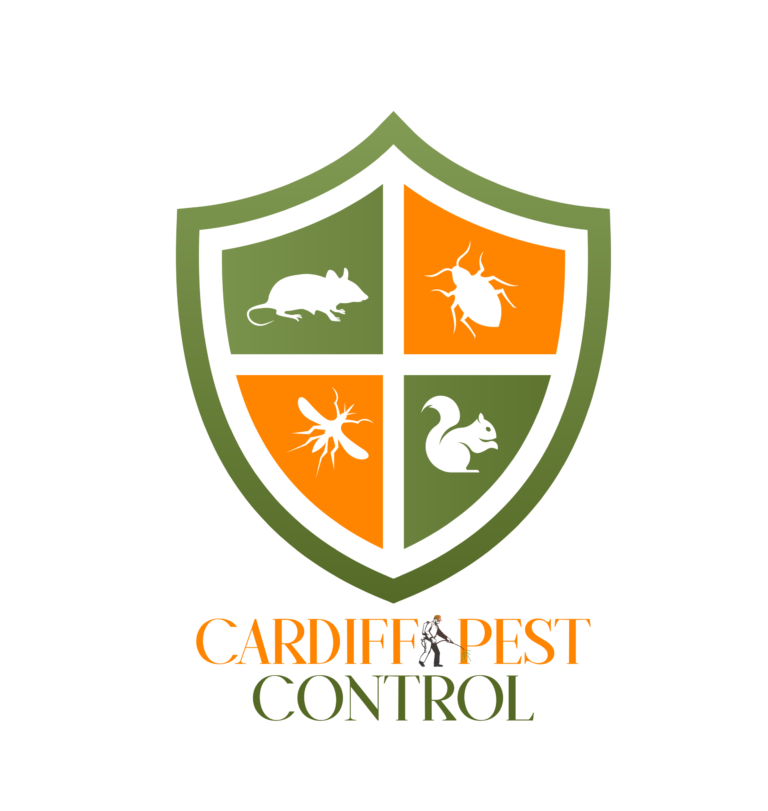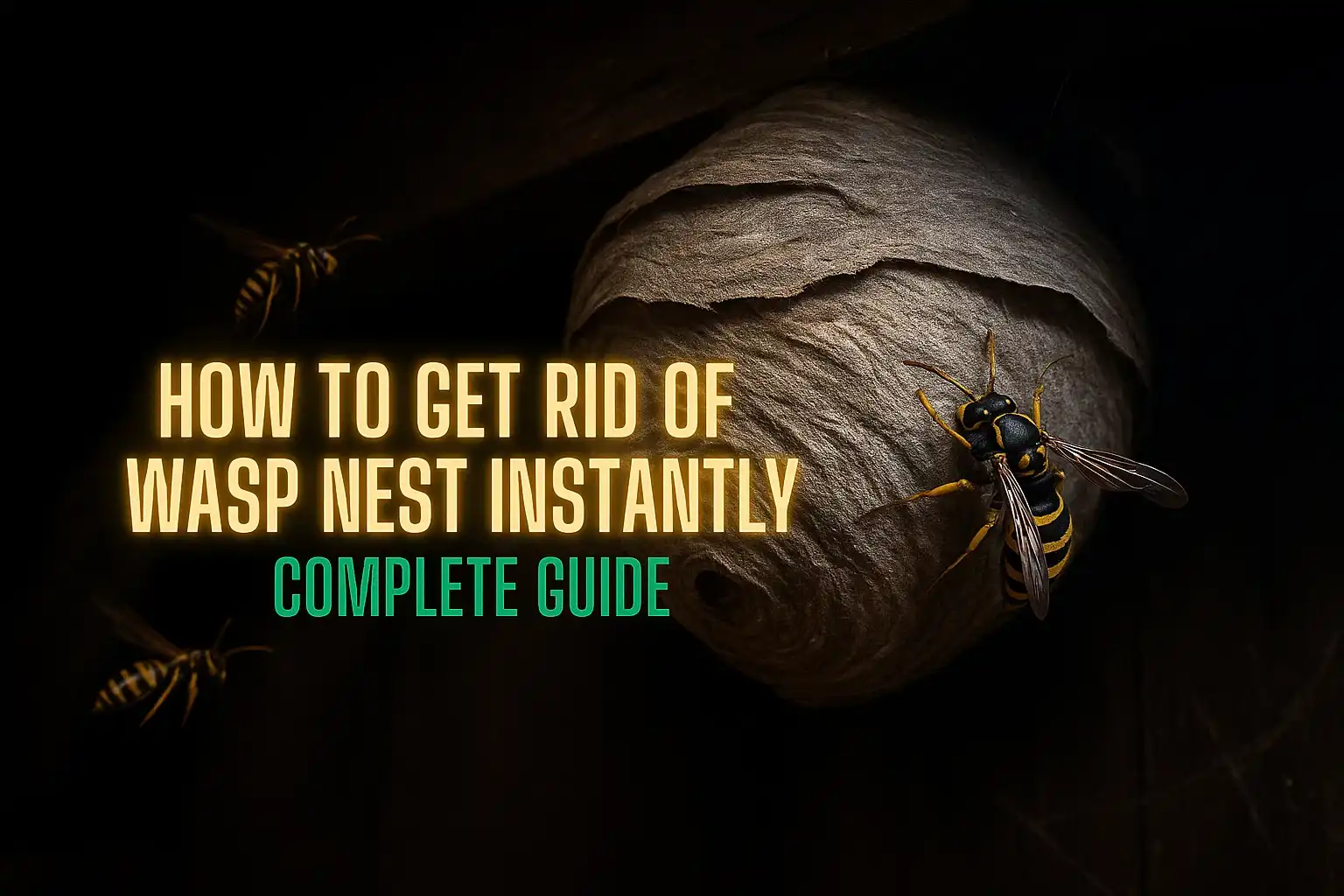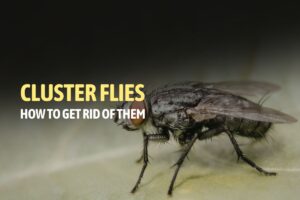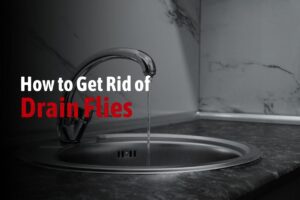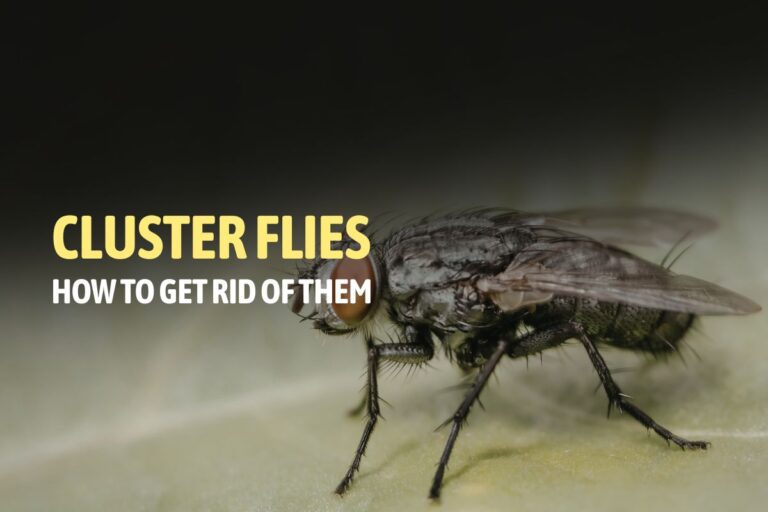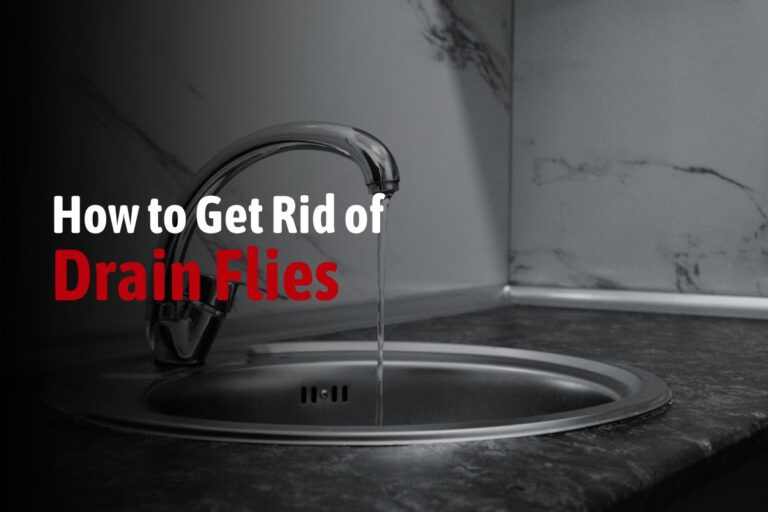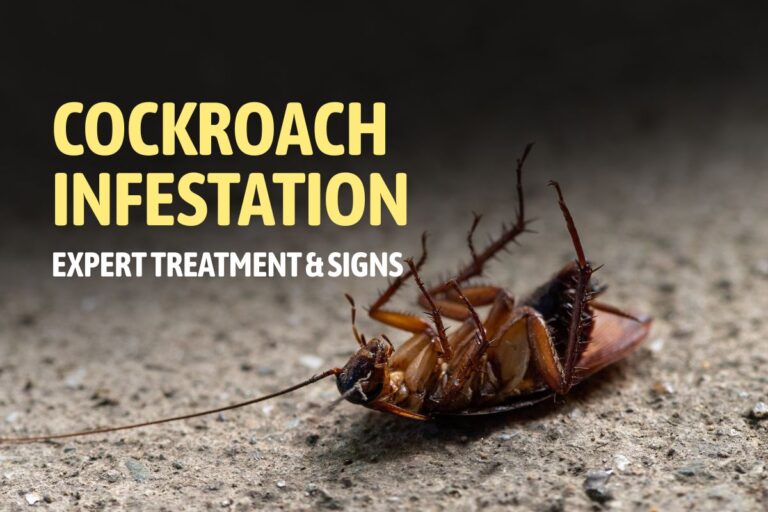Table of Contents
ToggleA wasp nest in your garden, attic, or even inside your home can be alarming and potentially dangerous. Wasps are aggressive when disturbed, and their stings can cause painful reactions or, worse, severe allergic responses. Knowing how to get rid of wasp nest safely and effectively is essential for any homeowner.
In this detailed guide, we will explore DIY wasp nest removal techniques, natural remedies, chemical solutions, indoor and outdoor removal methods, and prevention tips to ensure your home stays safe. Whether you’re tackling a small nest on your own or considering professional help, this guide covers everything you need to know to manage wasp problems efficiently.
How to Get Rid of a Wasps Nest Naturally
Natural methods are ideal for homeowners who want safe wasp nest removal without harsh chemicals. Here’s how you can handle nests naturally:
- Soap and water: Mix dish soap with water and spray directly onto the nest in the evening when wasps are less active. Soap clogs their breathing pores and kills them quickly.
- Peppermint oil: Combine peppermint oil with water and spray near entrances to repel wasps. This is especially useful for small outdoor nests.
- Essential oils: Clove, lemongrass, and eucalyptus oils act as natural deterrents. You can also place cotton balls soaked in these oils near the nest area.
Always wear protective clothing and maintain a safe distance. Natural methods work best on small nests. For larger nests or aggressive colonies, it’s safer to contact professionals for expert wasp nest removal services.
What Will Kill Wasps Instantly
Sometimes, natural methods are not enough, and you need fast-acting solutions to eliminate wasps:
- Commercial wasp sprays: Designed to kill wasps instantly from a safe distance. Always read and follow the instructions.
- Chemical-free alternatives: Products using pyrethrin or other low-toxicity ingredients can be safe for home use.
- Timing matters: Apply sprays in the evening or early morning when wasps are less active.
How to Get Rid of a Wasp Nest in a House
Indoor nests are dangerous because of the proximity to your family. Common locations include:
- Attics and lofts
- Wall cavities
- Under the roof eaves or behind insulation
Steps for safe wasp nest removal at home:
- Identify the nest location by observing wasp activity or listening for buzzing sounds.
- Wear protective clothing: gloves, long sleeves, and a face mask.
- Use approved wasp nest removal equipment or sprays for indoor use.
- Seal entry points after removal to prevent recurrence.
For comprehensive help, explore our Pest Control Services for safe and effective indoor wasp management.
How to Get Rid of a Wasp Nest In-Ground
Ground nests in gardens or lawns require careful handling. Signs include:
- Wasps are entering and exiting small holes in the soil
- Frequent activity in a particular garden area
For DIY wasp nest removal, spray the nest during evening hours and wear protective gear. Keep children and pets away during the process. Attempting to dig out a large underground nest can be risky. Professional help is often the safest choice.
How to Get Rid of a Wasp Nest in the Wall
Wall nests can be hidden and difficult to access. Safe removal steps include:
- Drill a small hole to insert a long-handled sprayer
- Apply a suitable wasp nest killer
- Avoid direct contact or forceful removal that may provoke wasps
When nests are large or hard to reach, professional Wasp Extermination services ensure safe and effective removal.
How to Get Rid of Wasps When You Can’t Find the Nest
Sometimes wasps are present, but the nest location is unknown. In such cases:
- Use baits or traps to reduce the population
- Block food sources like sugary drinks or fruit
- Observe areas of frequent wasp activity for clues to the nest location
These methods help manage wasp populations until the main nest is identified for safe removal.
Wasp Nest Killer – What Works Best
If immediate results are needed, choose the right wasp nest killer:
- Sprays with long-range application allow safe distancing
- Products with pyrethrin or permethrin are effective
- Apply during early morning or late evening for maximum efficiency
- Always wear protective gear to avoid stings
Professional exterminators can also provide specialized solutions, ensuring complete nest removal without risk.
Wasp Nest Removal – Tools and Equipment Needed
For safe wasp nest removal, you’ll need:
- Protective clothing: gloves, face mask, long sleeves
- Long-handled sprayers for distance
- Ladders for high nests
- Flashlights for evening applications
Using the right wasp nest removal equipment significantly reduces the risk of injury while ensuring effective results.
Preventing Wasp Nests in Homes
Prevention is key to avoiding future infestations. Steps include:
- Seal cracks and openings in walls, windows, and roofs
- Remove outdoor food sources like spilled drinks, fallen fruits, and pet food
- Hang decoy nests to deter wasps from settling
- Schedule regular pest inspection to detect early signs of new nests
Following these measures helps you maintain a wasp-free home all year round.
Common Mistakes to Avoid When Removing a Wasp Nest
Avoid these common errors for safer wasp nest removal:
- Ignoring small nests, they grow rapidly if left unattended
- Using fire or unsafe chemicals
- Attempting removal without protective gear
- Removing nests alone when they are large or aggressive
By being cautious, you reduce the risk of stings and ensure effective nest removal.
Conclusion
Knowing how to get rid of wasp nest requires early detection, careful removal, and preventive measures, whether using safe wasp nest removal techniques or professional help. Both indoor and outdoor nests need protective gear and proper timing to avoid stings. Regular maintenance, like sealing entry points and scheduling regular pest inspection, helps prevent future nests. For large or hard-to-reach nests, professional services ensure a safe, complete solution. Contact Cardiff Pest Control for expert wasp nest removal services and reliable pest control to keep your home wasp-free.
FAQs
1. Can I remove a wasp nest myself safely?
Yes, small nests can be handled using DIY wasp nest removal techniques, but large nests should be managed by professionals.
2. What is the safest time to remove a wasp nest?
Evenings or early mornings, when wasps are less active.
3. Are wasp sprays effective for instant removal?
Yes, wasp nest killers can eliminate wasps quickly when applied correctly.
4. How do I prevent wasps from building nests again?
Seal openings, remove outdoor food sources, hang decoy nests, and schedule regular pest inspections.
5. What should I do if someone gets stung while removing a nest?
Clean the sting, apply ice to reduce swelling, and seek medical attention if there’s an allergic reaction.
